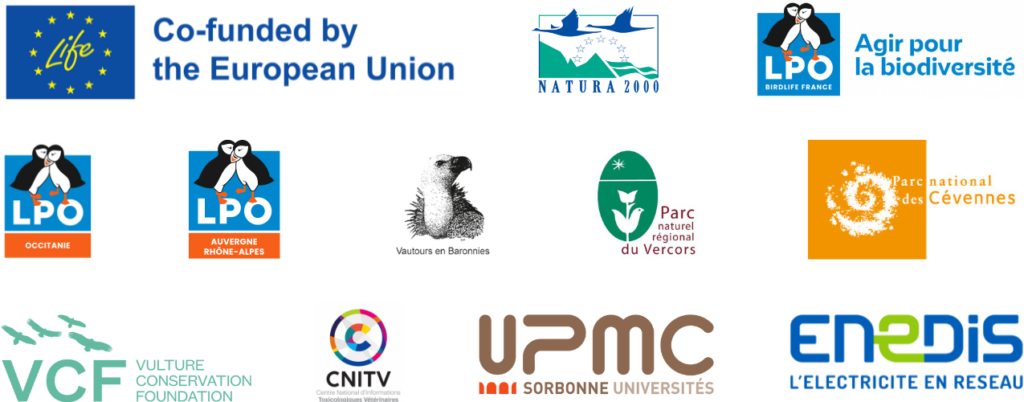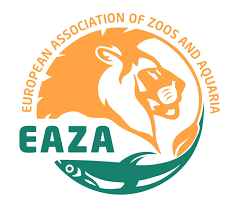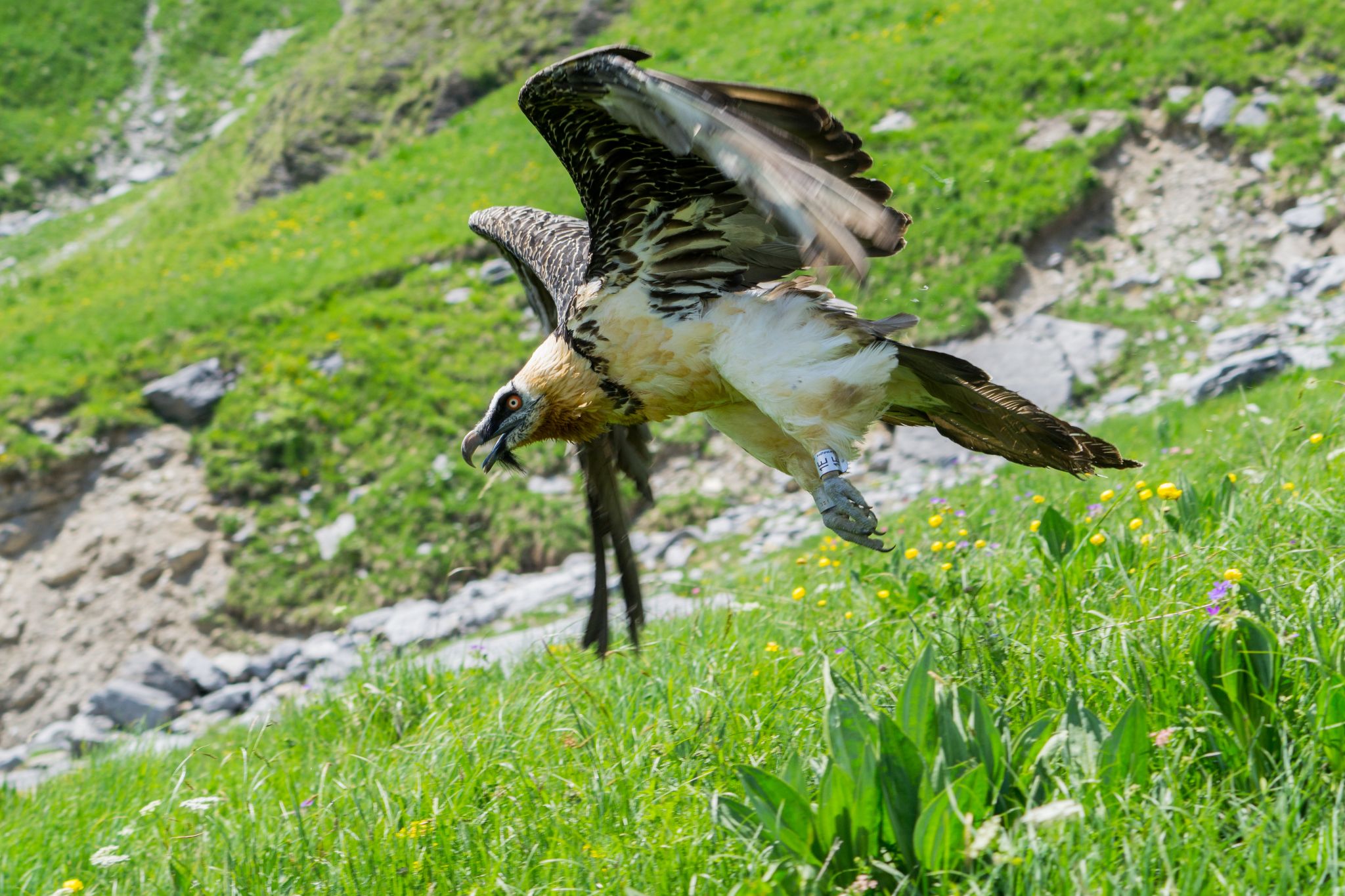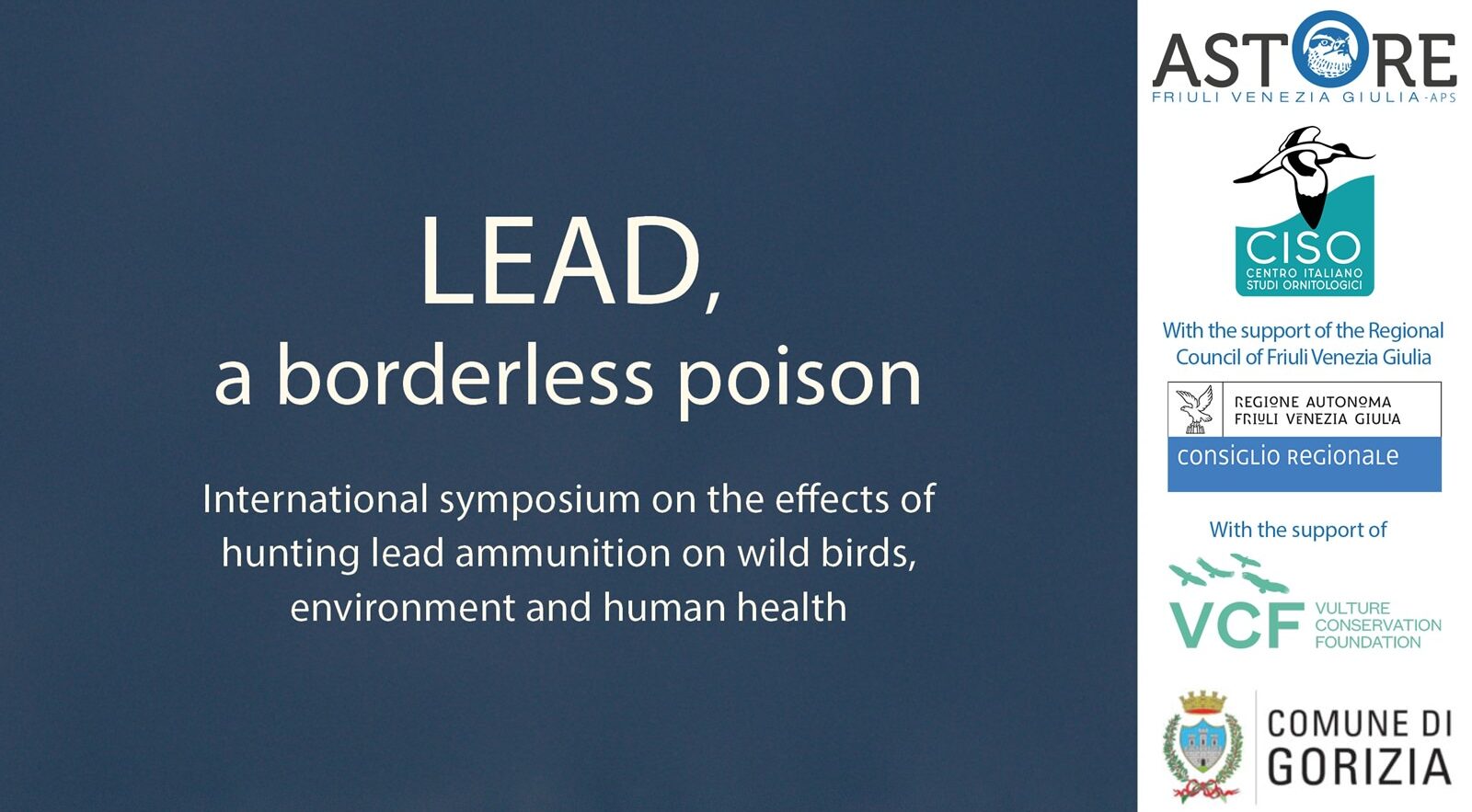There’s a new vulture in town! Meet Univers, the latest Bearded Vulture (Gypeatus Barbatus) chick to join the wild cliffs of the Grands Causses as part of the LIFE GypAct project. On 10 June 2025, this young male made the journey from sunny Andalusia, Spain, to southern France—becoming the third and final release of the season in the region.
Raised at the Bearded Vulture captive-breeding centre “Guadalentín”, Univers was given his poetic name by the imaginative pupils of the Saint-Jean-d’Alcas-Tournemire school. Now, he joins fellow young adventurers Ushuaia (from Finland) and Ubac (from the Czech Republic) that were released on May 27, 2025.
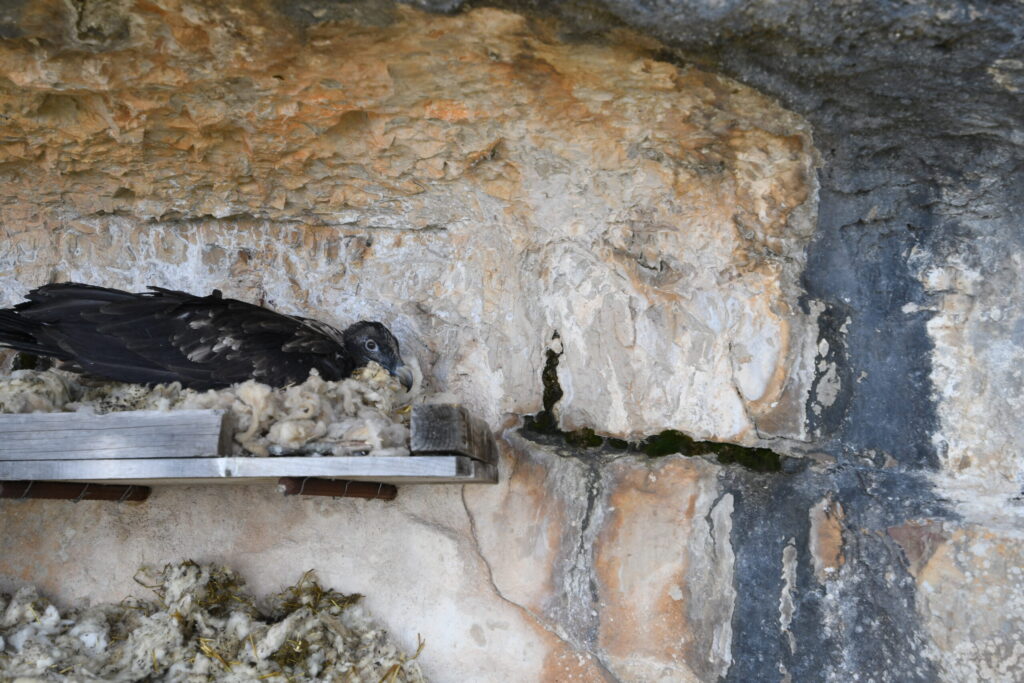
Meet “Univers” from Andalusia
Univers hatched on March 8 2025 at the Guadalentín captive breeding centre in Andalusia, a key facility coordinated by the Vulture Conservation Foundation as part of the European Endangered Species Programme (EEP).
Univers, (BG1271), the second chick of Elías x Viola (BG313 x BG337), hatched without assistance, weighing 139.4g. The chick developed normally in the laboratory, showing all the signs of healthy growth. On 10 March, it was successfully adopted by its biological parents and developed normally until its release date.
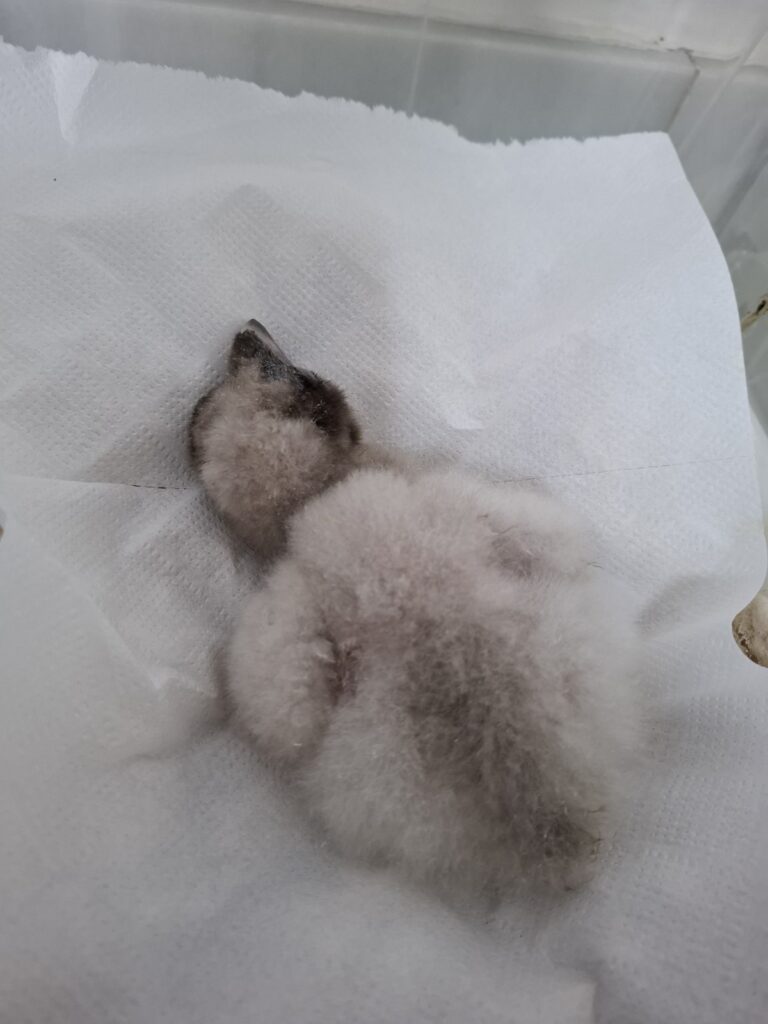
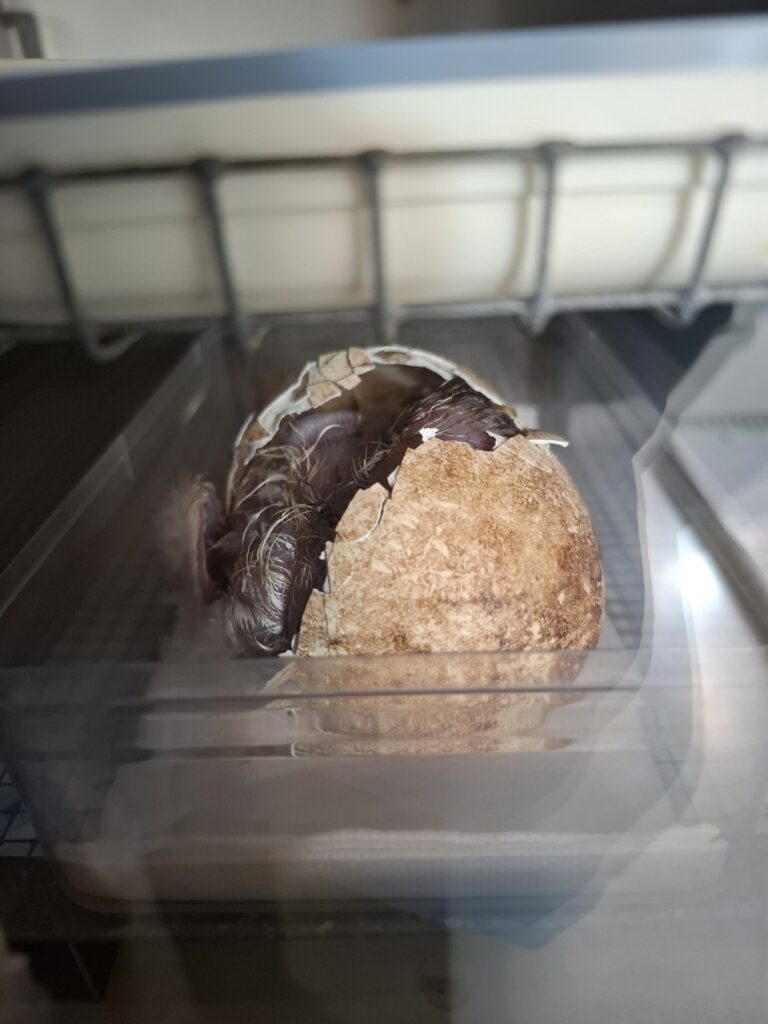
His arrival in the Grands Causses brings international collaboration full circle—his companions this season, Ushuaia e Ubac, hatched in Finland and the Czech Republic, respectively.
A smooth start in the wild
It didn’t take long for Univers to feel at home. After just a few hours on the hacking ledge, he began exploring his surroundings, feeding on his own, and even checking out his new feathered roommates. He’s already showing the right instincts that hint at a smooth transition into wild life.
Life on the cliffs of the Grands Causses has unfolded gently but steadily for all three young vultures. Ushuaia, the more cautious of the group, spent her first days perched quietly—taking it all in from a safe distance. Ubac, on the other hand, dove straight into the adventure: wandering the ledge, testing his wings, and even indulging in a few dust baths.
Now, with Univers added to the mix, the social dynamic is evolving. The trio is beginning to interact more, observing each other’s behaviour, and picking up new cues.
A season of milestones
This release marks the thirteenth consecutive year of Bearded Vulture reintroductions in the Grands Causses. Since 2012, 42 birds (19 females and 23 males) have been released here—of which 36 successfully fledged! Many still roam the skies above the Causses, while others have ventured further afield.
It’s all part of a bigger vision: rebuilding a thriving Bearded Vulture population across the Massif Central, and reconnecting the Alps and Pyrenees.
Next steps
The monitoring team is closely following their first weeks—watching as the young vultures stretch their wings, explore their surroundings, and eventually take flight. Bearded Vultures usually take their first flights when they are 110-130 days old – around 3-4 weeks after their release in the wild.
So keep your binoculars ready—whether it’s Univers, Ushuaia, or Ubac, you just might spot one of them soaring overhead soon.
Breeding Bearded Vultures for conservation
The Vulture Conservation Foundation collaborates with 40+ European institutions to manage the Bearded Vulture captive breeding network, part of EAZA’s European Endangered Species Programme (Bearded Vulture EEP).
For decades, we have been releasing captive-bred Bearded Vultures across Europe to restore local populations in areas where the species became extinct or are under threat. VCF oversees global captive Bearded Vulture efforts, ensuring coordination and adherence to EEP guidelines. As coordinators of the Bearded Vulture Captive Breeding Network, we optimize breeding outcomes and maintain conservation efforts across Europe. The release of Univers, was conducted as part of the GypAct project.
LIFE Gyp’Act is a 13M€ project, co-funded by the EU’s LIFE programme, that will run until 30 November 2028. Project partners are LPO – Ligue pour la Protection des Oiseaux as coordinator beneficiary, and the Vulture Conservation Foundation, Association Vautours en Baronnies, LPO Auvergne-Rhone-Alpes, LPO Occitanie, Sorbonne Université, ENEDIS, Centre National d’Informations Toxicologiques Vétérinaires, Parc National des Cévennes e Parc Naturel Régional du Vercors as associated beneficiaries.
